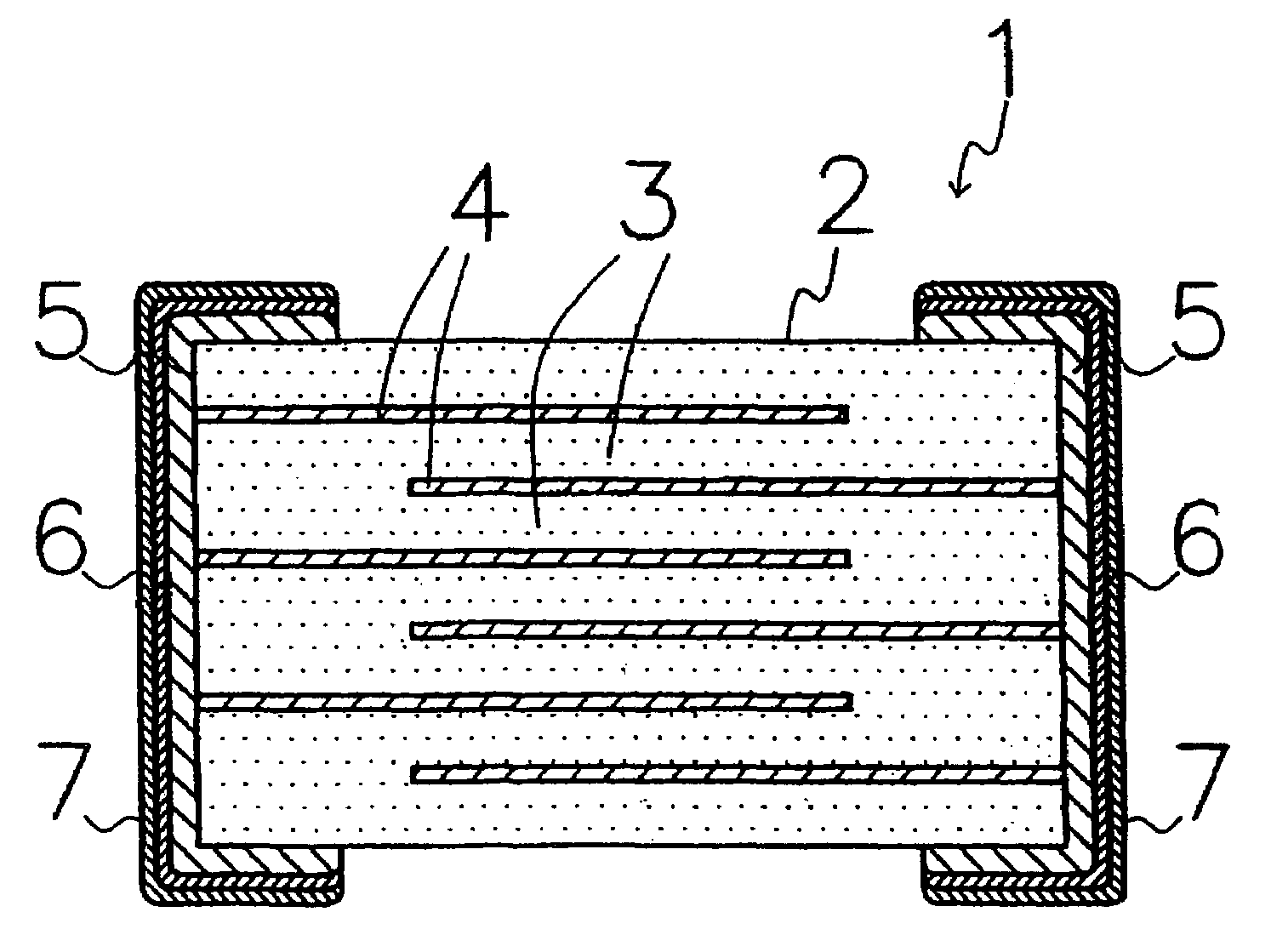Method for manufacturing laminated electronic component
a technology of electronic components and laminates, applied in the field of laminated electronic components, can solve the problems of difficult joining of internal electrodes, inability to achieve desired capacitance, and high cost of internal electrode materials, and achieve excellent joining with ni and suppress oxidation of ni surface.
- Summary
- Abstract
- Description
- Claims
- Application Information
AI Technical Summary
Benefits of technology
Problems solved by technology
Method used
Image
Examples
example 1
[0040]The case where a chip electronic component is a monolithic ceramic capacitor will be described in the present Example 1.
[0041]As starting materials, predetermined quantities of TiCl4 and Ba(NO3)2 were weighed individually, and were reacted with oxalic acid and, thereby a precipitate of barium titanyl oxalate (BaTiO(C2O4).4H2O) was produced. This precipitate was thermally decomposed at a temperature of 1,000° C. or more and, thereby BaTiO3 was synthesized as a primary component.
[0042]An oxide, carbonate or hydroxide of individual components were weighed, were mixed and milledto prepare a powder having a compositional ratio of 0.25Li2O-0.65(0.30TiO2.0.70SiO2)-0.10Al2O3 (mole ratio). The resulting mixed powder was heated to 1,500° C. in a platinum crucible, was quenched and, thereafter, was milled so as to produce an oxide powder having an average particle diameter of 1 μm or less as a first secondary component.
[0043]An oxide, carbonate or hydroxide of individual components were ...
example 2
[0053]The case where a chip electronic component is a laminated positive temperature coefficient thermistor will be described in the present Example 2.
[0054]As starting materials, BaCO3, TiO2, and Sm2O3 were weighed in order that (Ba0.9998Sm0.0002)TiO3 could be attained. Pure water was added to the resulting powder, and these were mixed and milled with zirconia balls in a ball mill for 16 hours, were dried and, thereafter, were calcined at 1,200° C. for 2 hours so as to produce a calcined powder.
[0055]Polyvinyl butyral as a binder, ethanol as a solvent, etc., were added to the calcined powder produced as described above, and mixing was performed in a ball mill so as to produce ceramic slurry. Subsequently, sheet molding was performed by the doctor blade method using the resulting ceramic slurry and, thereby a rectangular ceramic green sheet 35 μm thick was produced.
[0056]A conductive paste primarily containing Ni was printed on the resulting ceramic green sheet and, therefore, a con...
PUM
| Property | Measurement | Unit |
|---|---|---|
| particle diameter | aaaaa | aaaaa |
| temperature | aaaaa | aaaaa |
| temperature | aaaaa | aaaaa |
Abstract
Description
Claims
Application Information
 Login to View More
Login to View More - R&D
- Intellectual Property
- Life Sciences
- Materials
- Tech Scout
- Unparalleled Data Quality
- Higher Quality Content
- 60% Fewer Hallucinations
Browse by: Latest US Patents, China's latest patents, Technical Efficacy Thesaurus, Application Domain, Technology Topic, Popular Technical Reports.
© 2025 PatSnap. All rights reserved.Legal|Privacy policy|Modern Slavery Act Transparency Statement|Sitemap|About US| Contact US: help@patsnap.com



